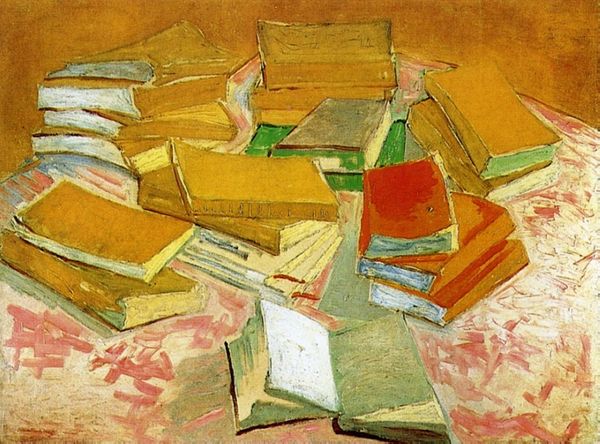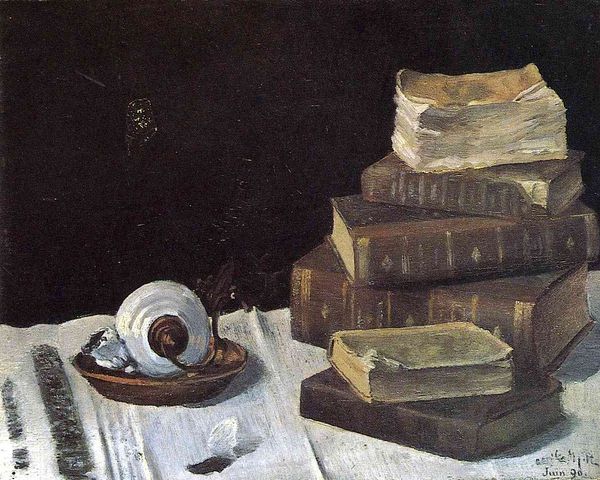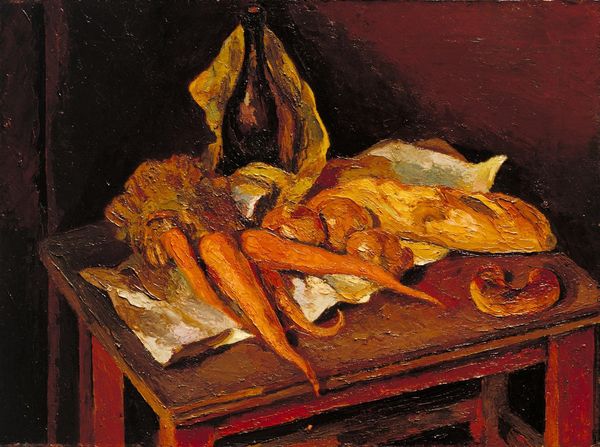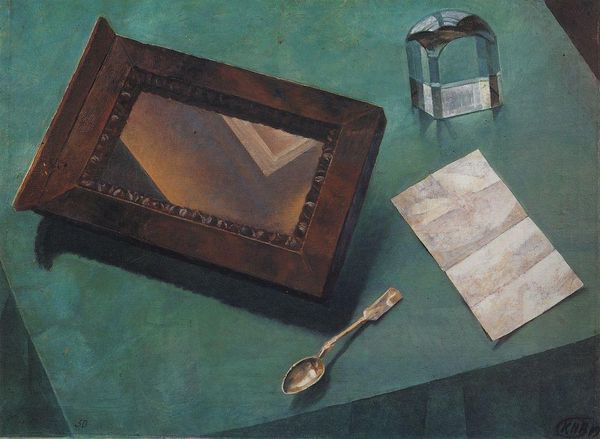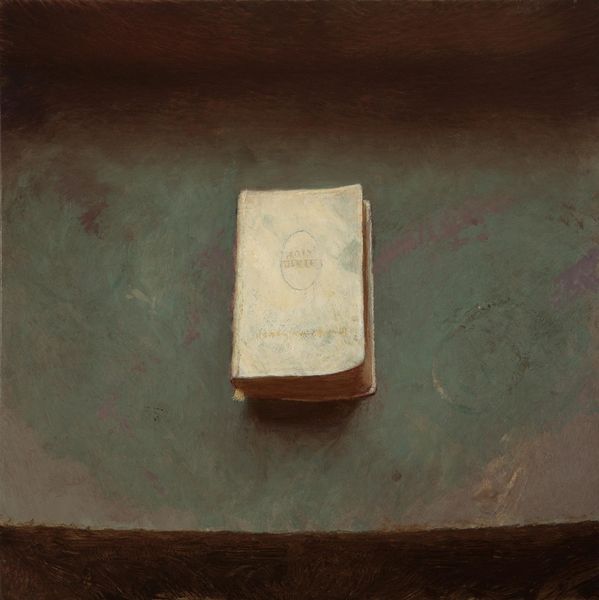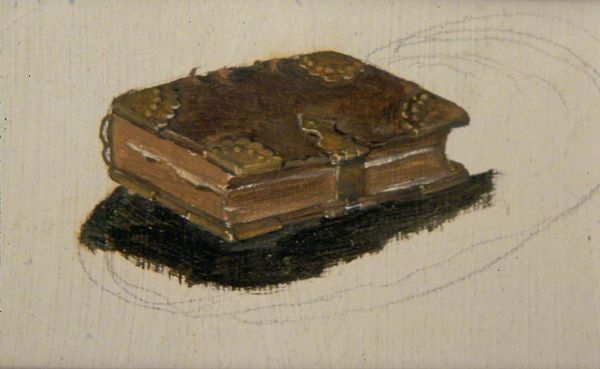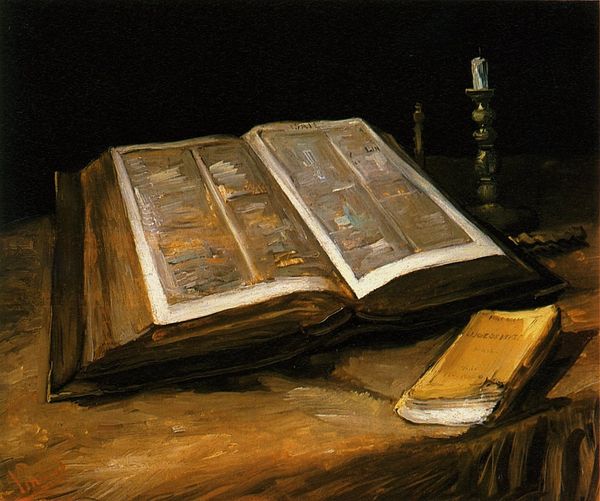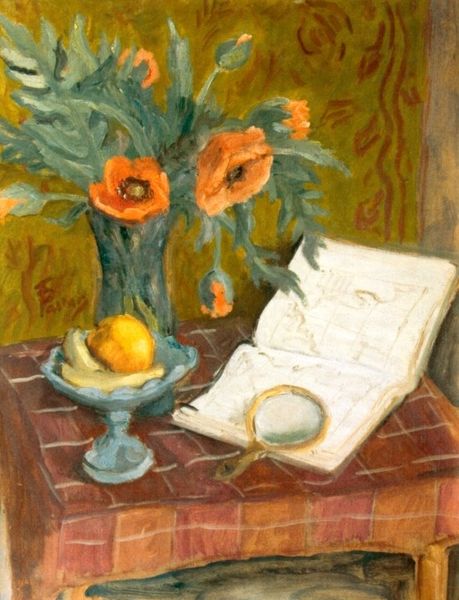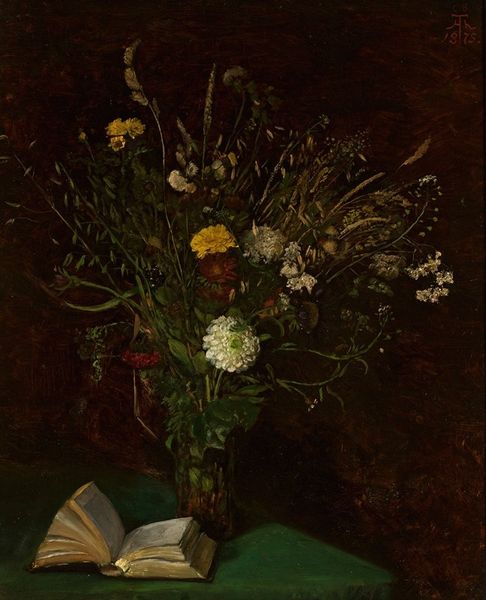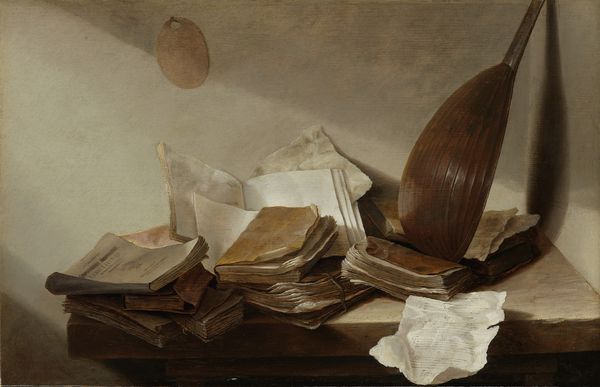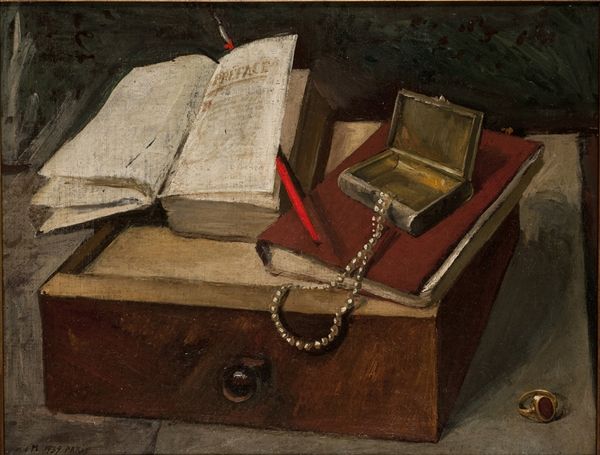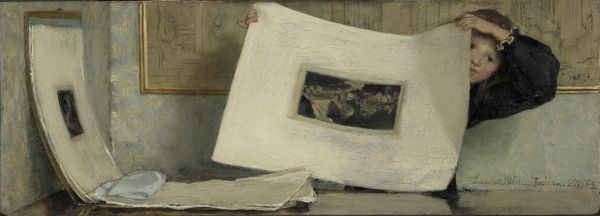
painting, oil-paint
#
painting
#
oil-paint
#
oil painting
#
post-impressionism
Copyright: Public Domain: Artvee
Curator: Van Gogh painted "Three Books" in 1887 while in Paris. It's an oil painting on canvas. What are your initial thoughts? Editor: The texture! You can almost feel the rough paper and the worn leather. It feels very intimate, almost as if you're intruding on someone's private reading space. But there's a strange flatness too, especially to that yellow surface. Curator: Well, Paris at this time was the center of the avant-garde, remember. Van Gogh was exposed to Impressionism and other movements. We can really see here how he moved toward Post-Impressionism. Editor: Right, Post-Impressionism, that push beyond mere optical impressions. There's an intention here to represent these books not just as objects but as something carrying a certain symbolic weight. The color palette alone is intense: yellow, ochre and red tones seem loaded. Curator: I would suggest this connects to his deep interest in literature and its role in society. Van Gogh often depicted books and their presence indicates their intellectual and social relevance within the art world at this time. The subjects being books. Editor: Absolutely. And who was reading these books, we might ask? It raises questions about literacy, access to knowledge, and the shaping of public opinion through text in late 19th century France. The well-worn appearance suggests these books are valued possessions and used, passed along. Curator: The positioning of the books is strategic too. The arrangement implies not just reading material but the act of contemplation, reflection through artistic visual storytelling. Editor: It is a quiet subversion against the academic art world norms that is exciting when understood within the social dynamic that it was birthed from. We consider paintings of history, mythology and landscapes the epitome of cultural production yet here Van Gogh insists otherwise by featuring such unassuming objects as his subject. It feels revolutionary, doesn't it? Curator: Absolutely, this piece demonstrates his evolving vision during his formative years. He understood his present cultural climate and wanted to evolve his work to speak to the shifting landscape, quite powerfully if I do say so myself. Editor: Agreed. And it is also exciting to examine from our present vantage, how this work has also altered the visual representation of cultural identity as a tool for artists in contemporary discourse and social movements. Curator: Indeed. "Three Books" is more than just a still life. It is, as you say, an active participant in ongoing dialogues about culture, art, and the meaning of knowledge itself. Editor: Precisely! A silent yet potent testament to the power of art and its social underpinnings.
Comments
No comments
Be the first to comment and join the conversation on the ultimate creative platform.
